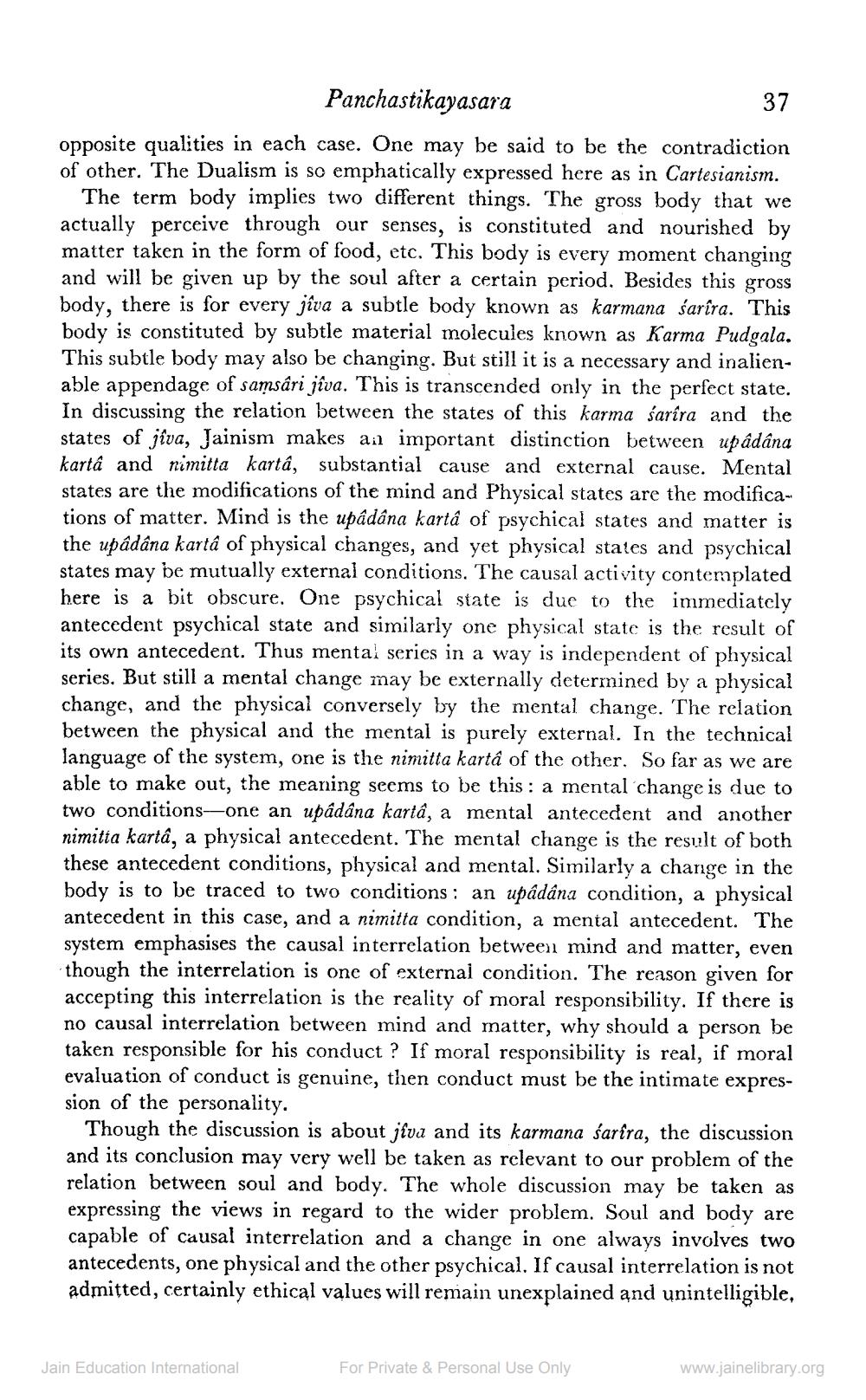________________
Panchastikayasara
opposite qualities in each case. One may be said to be the contradiction of other. The Dualism is so emphatically expressed here as in Cartesianism.
The term body implies two different things. The gross body that we actually perceive through our senses, is constituted and nourished by matter taken in the form of food, etc. This body is every moment changing and will be given up by the soul after a certain period. Besides this gross body, there is for every jîva a subtle body known as karmana sarira. This body is constituted by subtle material molecules known as Karma Pudgala. This subtle body may also be changing. But still it is a necessary and inalienable appendage of samsâri jiva. This is transcended only in the perfect state. In discussing the relation between the states of this karma sarira and the states of jiva, Jainism makes an important distinction between upâdâna karta and nimitta kartâ, substantial cause and external cause. Mental states are the modifications of the mind and Physical states are the modifica tions of matter. Mind is the upâdâna karta of psychical states and matter is the upâdâna karta of physical changes, and yet physical states and psychical states may be mutually external conditions. The causal activity contemplated here is a bit obscure. One psychical state is due to the immediately antecedent psychical state and similarly one physical state is the result of its own antecedent. Thus mental series in a way is independent of physical series. But still a mental change may be externally determined by a physical change, and the physical conversely by the mental change. The relation between the physical and the mental is purely external. In the technical language of the system, one is the nimitta karta of the other. So far as we are able to make out, the meaning seems to be this: a mental change is due to two conditions-one an upâdâna karta, a mental antecedent and another nimitta kartâ, a physical antecedent. The mental change is the result of both these antecedent conditions, physical and mental. Similarly a change in the body is to be traced to two conditions: an upâdâna condition, a physical antecedent in this case, and a nimitta condition, a mental antecedent. The system emphasises the causal interrelation between mind and matter, even though the interrelation is one of external condition. The reason given for accepting this interrelation is the reality of moral responsibility. If there is no causal interrelation between mind and matter, why should a person be taken responsible for his conduct? If moral responsibility is real, if moral evaluation of conduct is genuine, then conduct must be the intimate expression of the personality.
37
Though the discussion is about jiva and its karmana sarira, the discussion and its conclusion may very well be taken as relevant to our problem of the relation between soul and body. The whole discussion may be taken as expressing the views in regard to the wider problem. Soul and body are capable of causal interrelation and a change in one always involves two antecedents, one physical and the other psychical. If causal interrelation is not admitted, certainly ethical values will remain unexplained and unintelligible,
Jain Education International
For Private & Personal Use Only
www.jainelibrary.org




